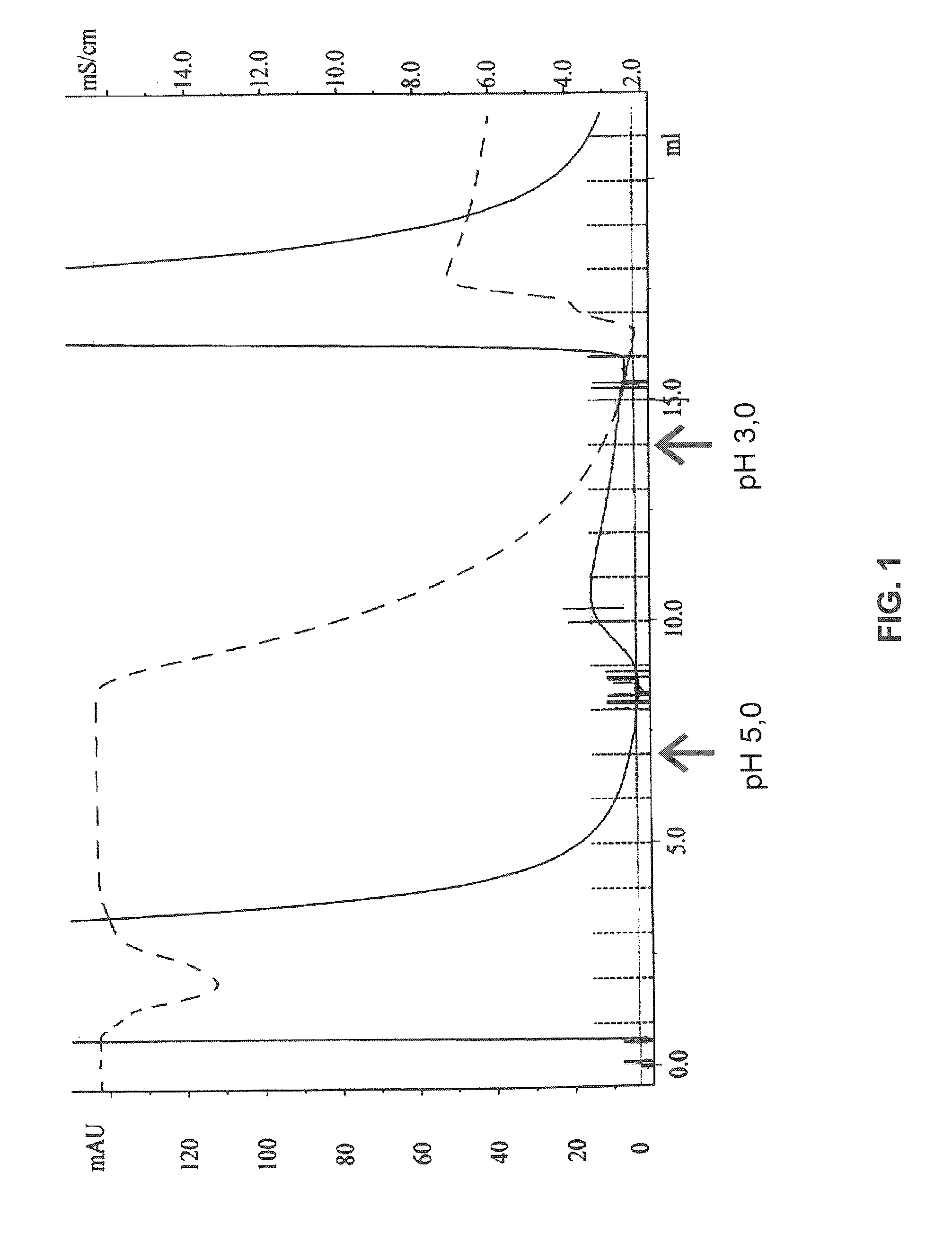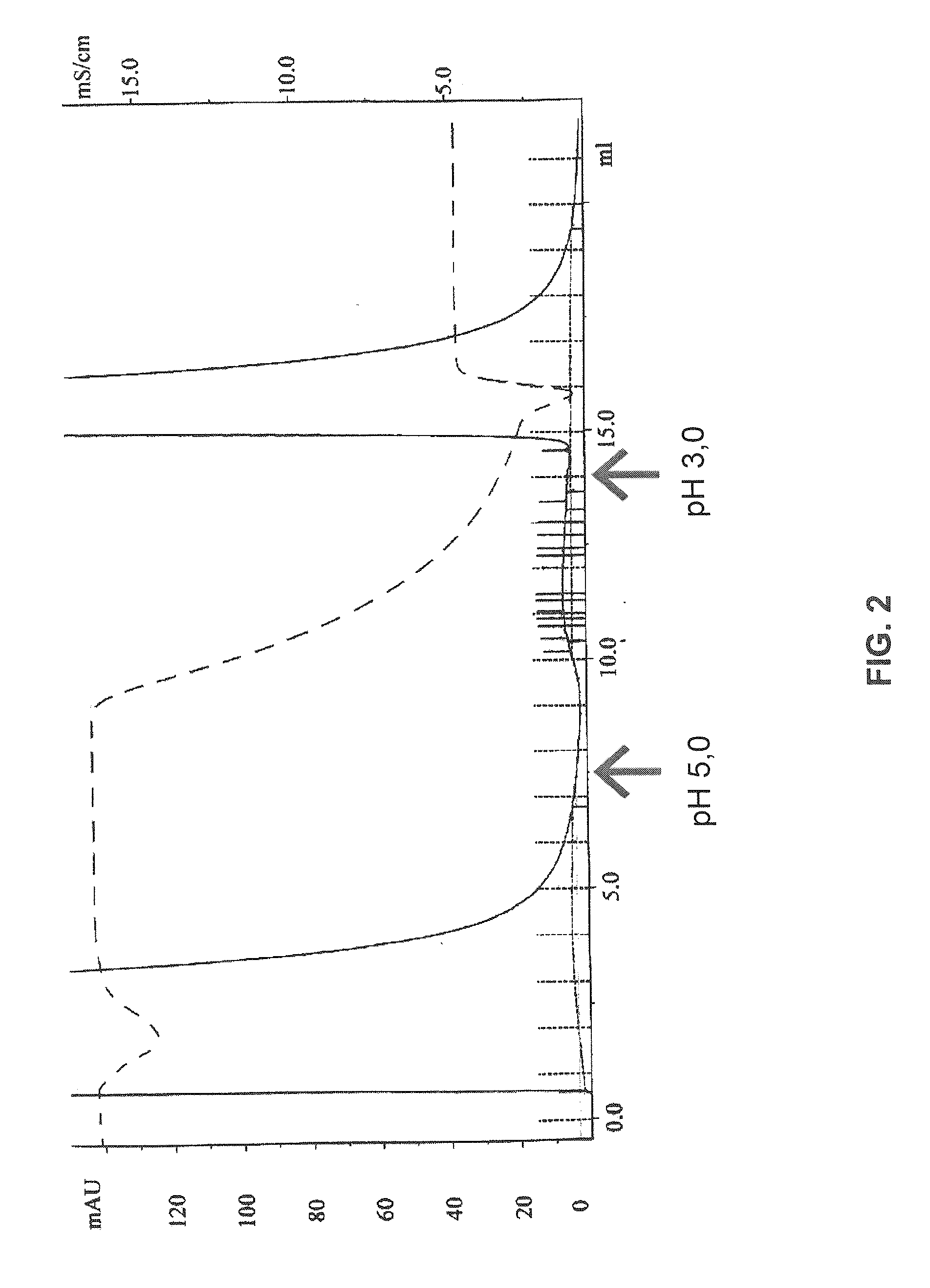Compositions, Methods for Treatment, and Diagnoses of Autoimmunity-Related Disorders and Methods for Making Such Compositions
a technology for autoimmunity and composition, applied in the field of compositions, methods for treating and diagnosing autoimmunity-related disorders, medical therapies and diagnostics, can solve the problems of disturbing the homeostatic situation, complex process, and tissue producing serious illness, and achieve the effect of restoring the immune system of patients
- Summary
- Abstract
- Description
- Claims
- Application Information
AI Technical Summary
Benefits of technology
Problems solved by technology
Method used
Image
Examples
example 1
Protein A Affinity Purifications
[0131]Purification of IgG from plasma samples (1 ml each) was performed by passing the plasma over protein A immobilized on Sepharose. Individual affinity columns were prepared by washing with PBS, followed by a mock elution with 0.1 M glycine-HCl (pH 3.0), and then were equilibrated with PBS buffer at pH 7.0 (binding buffer). Plasma sample was mixed with an equal volume of binding buffer and passed over the column with flow rate 0.2 ml / min. Unbound material was removed by washing with binding buffer. Bound IgG k1 was eluted in 1-ml fractions by using 0.1 M ammonium bicarbonate buffer (pH 5.0). Bound IgG k2 was eluted in 1-ml fractions by using 0.1 M glycine-HCl buffer (pH 3.0) The fractions were read at OD280, and fractions (≧0.1) were pooled. The protein concentration was determined by taking the absorbance value at OD280 and using an extinction coefficient of 13.6 for a 1.0% solution. The purity of the IgG preparations was assessed by SDS-polyacryl...
example 2
Protein L Affinity Purification of Immunoglobuline Light Chains from Urine Samples
[0133]Concentration of IgG kappa light chains from urine samples (100 ml each) was performed by passing the urine, equilibrated with PBS pH 7.2 overnight over protein L immobilized on Sepharose. Urine sample was passed over the column with flow rate 2 ml / min. Unbound material was removed by washing with 10 column volumes of binding buffer. Bound IgG kappa light chains were eluted in 0.2-ml fractions by using 0.1 M glycine-HCl buffer (pH 3.0). The fractions were read at OD280, and fractions (≧0.1) were pooled. The protein concentration was determined by taking the absorbance value at OD280 and using an extinction coefficient of 13.6 for a 1.0% solution.
[0134]Urine samples from four patients with various immune disorders were subjected to the analytical procedure described herein prior to and after the treatment of these patients using the treatment methods of the invention described herein. As a control...
example 3
A Design for an Effective IVIG Manufacturing Process
[0135]Manufacturers will have many process steps in common although there will be some differences between manufacturers. The standard IVIG manufacturing process described below contains the steps commonly used:[0136]a. Removal of Factor VIII and Factor IX using cryoprecipitation and ion exchange.[0137]b. A series of cold alcohol processes (Cohn and Oncley cold ethanol process or variants including the Kistler & Nitschmann cold ethanol fractionation process) and absorption that results in a solution containing greater than 99% IgG.[0138]c. A series of steps using low pH (30° C.) and harsh chemicals including solvents and detergents.[0139]d. Some manufacturers use a small amount of detergent (lubricant) and a filter that will remove any remaining viruses.[0140]e. Concentration by ultrafiltration to remove water.[0141]f. A last sterile filtration to remove microbial contaminants.[0142]g. Adjust to proper pH (typically 4-6) and add st...
PUM
| Property | Measurement | Unit |
|---|---|---|
| Temperature | aaaaa | aaaaa |
| Fraction | aaaaa | aaaaa |
| Time | aaaaa | aaaaa |
Abstract
Description
Claims
Application Information
 Login to View More
Login to View More - R&D
- Intellectual Property
- Life Sciences
- Materials
- Tech Scout
- Unparalleled Data Quality
- Higher Quality Content
- 60% Fewer Hallucinations
Browse by: Latest US Patents, China's latest patents, Technical Efficacy Thesaurus, Application Domain, Technology Topic, Popular Technical Reports.
© 2025 PatSnap. All rights reserved.Legal|Privacy policy|Modern Slavery Act Transparency Statement|Sitemap|About US| Contact US: help@patsnap.com


